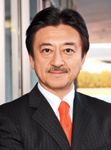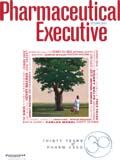Atsushi Nagahisa: Creating Customer Value
Atsushi Nagahisa, President & CEO, RaQualia
I am, by temperament, an optimist and I believe our industry can fix today's greatest global policy challenge: leveraging hard science to address an enormous—and growing—burden of unmet medical need. My contribution has been to build on a career as a scientist and administrator to reinvigorate the research enterprise to accomplish two objectives: 1) To make cutting-edge science more commercially viable, delivered at a timely pace, and at an appropriate cost to the patient; and 2) To advance the common good for access to new therapies that cure and extend life, particularly in markets in Asia, where the potential to make a difference is great.

Atsushi Nagahisa
Pfizer's decision in early 2008 to close its research facilities in Nagoya, Japan, as part of a global restructuring was a fundamental challenge and an opportunity. As a Pfizer employee and lead scientist at the facility, I recognized a chance to launch something entirely new: a spin-off venture completely constructed to optimize a variety of innovative collaborations. In doing so, we could create a drug discovery and development engine unencumbered by the impediments to speed and productivity that plague Big Pharma. Seventy of our researchers responded, and from day one we challenged them to develop a structure for our new venture, RaQualia Pharma, that thrives on open collaboration, both internally and externally, at every stage of our work.
We set a goal of producing two candidate compounds per year. We already have over 250 collaborations and partnerships working toward that objective. We built a horizontal, flat organization without preassigned titles, supervisors, or subordinates. We decided our business would be to produce compounds that demonstrate real proof of value to customers. This is the antithesis of what much of Big Pharma had become, producing processes and output that was far removed from real customer needs.
The transition from Pfizer was facilitated by our mutual awareness that only about one-third of the company's IP was actually being used to develop compounds. The remaining 70 percent was either sitting on the shelf or abandoned, for reasons often unrelated to its clinical potential. The implication was clear: how to build on the assets of a scalable global development platform while also unleashing smaller ventures to exploit the creative potential of that unused IP. Then-Pfizer CEO Jeff Kindler agreed to support financially the launch of a new company, if we secured the necessary talent and investment to drive the new entity forward. This was not a small decision. It marked the first time for Pfizer to launch an organic spinoff company, one that was not previously acquired in an M&A.
We faced two key challenges in launching RaQualia. The first was convincing the investment community that a new model could be successful. The second was creating from scratch an internal culture built on trust and collective creativity to ensure the type of speed, flexibility, and teaming vital to success. RaQualia Pharma's initial employees came from the Nagoya Laboratories and were used to working for a large, multinational research organization. Over a six-month period while we were raising capital, these individuals worked together to create a model they could claim as their own. The trust—shinrai—that is at the core of our culture is deeply rooted in those early days of working together.
Our new model is also applicable to something much wider, which is restoring my county's leadership in the life sciences. With its deep science and engineering talent, history of innovation in biology and chemistry, and large healthcare market, Japan should be a place where bioventures thrive. Japan also has experience with integrating best practices from multiple sources and using that combined knowledge to create new and innovative sources of value, a process I call the "Five I's:" importing, imitating, improving, internalizing, and innovating. Notwithstanding these elements, Japan's regulatory and clinical research environment continue to hamper its potential. Nevertheless, the spinoff model can succeed in Japan, as many companies have IP and talent. It might also help to address a hesitancy to take early-stage risks, if those risks are backed by large corporations with stakes in the venture. Once major institutions buy in to the approach, the speed of adoption in Japan can be fast. My goal is to ensure RaQualia Pharma proves the example of Japan as a potent integrator in the life sciences, particularly as more clinical data is generated ex-Japan, for example in Korea and China.

Addressing Disparities in Psoriasis Trials: Takeda's Strategies for Inclusivity in Clinical Research
April 14th 2025LaShell Robinson, Head of Global Feasibility and Trial Equity at Takeda, speaks about the company's strategies to engage patients in underrepresented populations in its phase III psoriasis trials.
Beyond the Prescription: Pharma's Role in Digital Health Conversations
April 1st 2025Join us for an insightful conversation with Jennifer Harakal, Head of Regulatory Affairs at Canopy Life Sciences, as we unpack the evolving intersection of social media and healthcare decisions. Discover how pharmaceutical companies can navigate regulatory challenges while meaningfully engaging with consumers in digital spaces. Jennifer shares expert strategies for responsible marketing, working with influencers, and creating educational content that bridges the gap between patients and healthcare providers. A must-listen for pharma marketers looking to build trust and compliance in today's social media landscape.